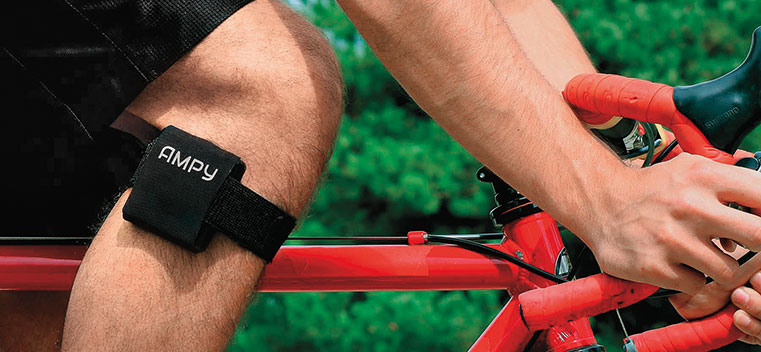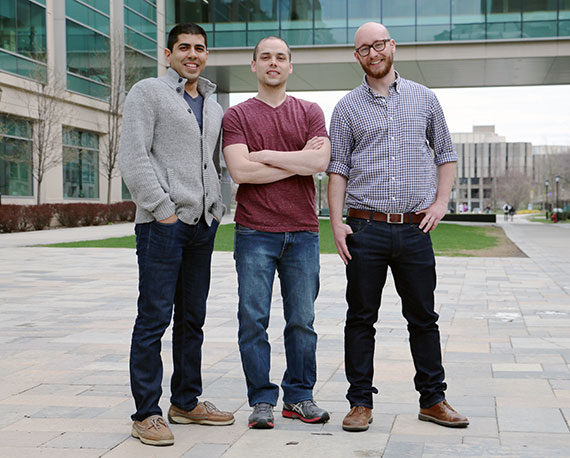
Amped Up
Tell us what you think. E-mail comments or questions to the editors at letters@northwestern.edu.
Ever wonder about those strange designations we use throughout Northwestern to identify alumni of the various schools of the University? See the complete list.
Find Us on Social Media
Engineering doctoral students’ device makes power portable.
Tejas Shastry ’11, Mike Geier and Alex Smith have one goal — to free people from the wall.
Too often battery life limitations force mobile phone users to stay close to an electric outlet. The three materials science and engineering doctoral students created AMPY (formerly myPowr), a wearable device that converts the energy people create from everyday activities into power for smartphones, watches and other technologies.
The AMPY co-founders came together during the NUvention: Energy class they took in winter 2013. The class, a partnership between Northwestern’s Farley Center for Entrepreneurship and Innovation and the Institute for Sustainability and Energy at Northwestern, uses an interdisciplinary approach that allows students to create real products and companies.

AMPY founders, from left, Tejas Shastry, Mike Geier, Alex Smith
After joining forces in the course, Shastry, Geier and Smith quickly found a common connection: they’re all runners, and for their class project they set out to find an efficient way to use the kinetic energy they created while running. “Why can’t we use that energy to recharge our phones?” they reasoned.
Tapping Geier’s expertise in circuitry, the team picked apart other devices — often cumbersome and bulky — that allow for the capture of kinetic energy. AMPY’s founders developed a patent-pending system to shrink the kinetic energy conversion technology. They engineered a more practical device designed to be worn on an armband while working out. It’s also small enough to fit into a purse or pocket to track constant motion throughout the day.
According to the AMPY team, the USB-connected device can convert 10,000 steps of walking, 30 minutes of running or one hour of cycling into three hours of battery life for your smartphone.
After they completed the NUvention course, Shastry, Geier and Smith decided to pursue production of the device. Working out of 1871, a Chicago tech incubator, the team developed a mobile application that tracks a user’s physical activity. They also entered regional and national business plan competitions. In the spring the team won the Clean Energy Trust’s $75,000 Chicago Challenge Cup and the crowd favorite award at 1776’s Challenge Cup in Washington, D.C.
The founders used those competition wins to fund an initial prototype. More than 1,100 people have signed up to test AMPY. They launched a Kickstarter campaign in October to help fund a more mainstream release. They reached their $100,000 goal in less than 72 hours. The device, which sells for $95, can be preordered on the AMPY website.



 Facebook
Facebook Twitter
Twitter Email
Email


